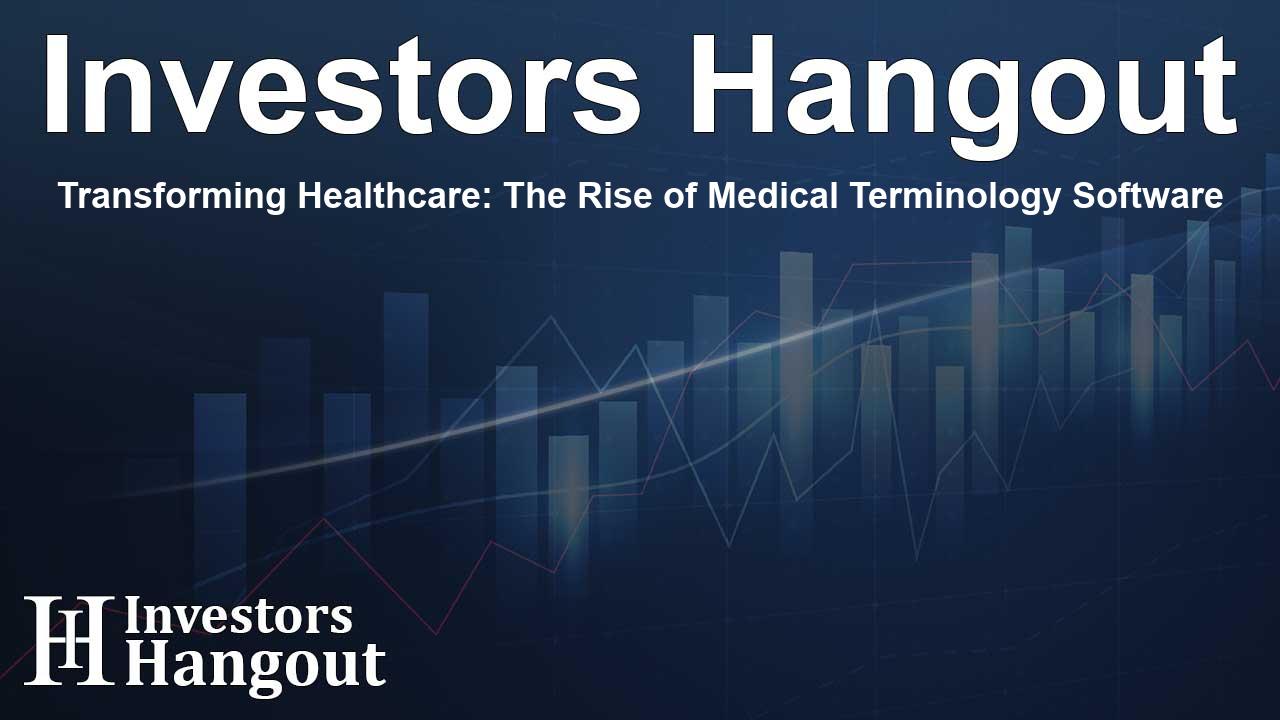Transforming Healthcare: The Rise of Medical Terminology Software

Understanding the Surge in Medical Terminology Software Market
The medical terminology software market is on the brink of remarkable growth, projected to reach USD 5.92 Billion by 2031, growing at an impressive CAGR of 19.4%. This upward trajectory is mainly fueled by the increasing utilization of electronic health records and the urgent need for healthcare facilities to enhance their reimbursement efficiency.
The Driving Forces Behind Market Growth
As healthcare practices evolve, the push towards digitalization and efficiency is stronger than ever. The adoption of medical terminology software is crucial in standardizing terms and streamlining communications in healthcare settings. Notably, while looking for ways to comply with healthcare regulations, the healthcare sector emphasizes technology that reduces errors and enhances patient outcomes.
Market Overview and Key Insights
This sector is not just about software; it's about improving patient care through effective communication across various healthcare platforms. The integration of advanced technologies like artificial intelligence is set to herald a new era for this field, offering innovative solutions that can revolutionize operations in medical settings.
Current Market Status
- Market Revenue in 2023: USD 1.43 Billion
- Estimated Value by 2031: USD 5.92 Billion
- Forecast Period: 2024-2031
- Segment Growth Rate: 19.4% CAGR
Primary Market Segments Covered
Medical terminology software caters to various segments, including applications, end users, products & services, and regional markets. The increasing focus on healthcare delivery quality, along with the growth in regulatory compliance requirements, is expected to significantly contribute to market expansion.
Quality Reporting: A Key Catalyst for Growth
The adoption of medical terminology software for quality reporting applications stems from the healthcare industry's intensified dedication to improving patient care and regulatory adherence. Healthcare sectors are dedicating resources to reduce errors and maximize the overall efficiency of their operations.
Boosting Claims Processing with Advanced Technologies
Moreover, there's a notable demand for better claims processing, with healthcare providers increasingly prioritizing fraud detection in an era where digital health solutions are rapidly taking hold. Innovations in medical terminology software can bridge the gap, enhancing the precision of claim submissions and reducing the chances of errors.
Regional Insights: North America Leading the Charge
North America remains a powerhouse for medical terminology software due to its well-established healthcare infrastructure. The rapid adoption of electronic health records, coupled with strict regulatory frameworks, positions this region as a leader in terms of market share and revenue generation.
Market Challenges and Opportunities
Despite the positive outlook, challenges such as resistance to adopting new technologies and concerns around data privacy and security persist. However, these obstacles also present opportunities for growth as the demand for integrated healthcare IT solutions rises.
Emerging Market Trends and Innovations
As market players continue to innovate and refine their offerings, we can expect to see a wave of new product launches and advancements in healthcare technologies. Companies that stay ahead of the curve by incorporating cutting-edge technologies will likely reap the benefits in terms of market share and consumer loyalty.
Conclusion: The Future of Medical Terminology Software
The medical terminology software market is poised for substantial growth, driven by the intersection of improved healthcare processes, technology innovation, and an unwavering commitment to patient care quality. This evolution is not just about software; it’s about redefining the way healthcare communicates.
Frequently Asked Questions
What factors are driving the growth of the medical terminology software market?
The growth is primarily driven by the rising adoption of electronic health records, the need for improved coding accuracy, and a focus on enhancing reimbursement efficiency.
How is artificial intelligence influencing the medical terminology software market?
AI integration offers new opportunities by improving accuracy, predictive capabilities, and operational efficiencies within healthcare settings.
Why is North America significant in the medical terminology software landscape?
North America leads due to a robust healthcare infrastructure and quick adoption of electronic health records alongside stringent regulations.
What challenges does the medical terminology software market face?
Challenges include resistance to adopting new technologies and concerns over data privacy and security, which can hinder sector growth.
What is the market outlook for this sector?
The outlook is highly positive, with expectations of substantial market growth through the integration of advanced technologies and a commitment to improving healthcare delivery.
About Investors Hangout
Investors Hangout is a leading online stock forum for financial discussion and learning, offering a wide range of free tools and resources. It draws in traders of all levels, who exchange market knowledge, investigate trading tactics, and keep an eye on industry developments in real time. Featuring financial articles, stock message boards, quotes, charts, company profiles, and live news updates. Through cooperative learning and a wealth of informational resources, it helps users from novices creating their first portfolios to experts honing their techniques. Join Investors Hangout today: https://investorshangout.com/
Disclaimer: The content of this article is solely for general informational purposes only; it does not represent legal, financial, or investment advice. Investors Hangout does not offer financial advice; the author is not a licensed financial advisor. Consult a qualified advisor before making any financial or investment decisions based on this article. The author's interpretation of publicly available data shapes the opinions presented here; as a result, they should not be taken as advice to purchase, sell, or hold any securities mentioned or any other investments. The author does not guarantee the accuracy, completeness, or timeliness of any material, providing it "as is." Information and market conditions may change; past performance is not indicative of future outcomes. If any of the material offered here is inaccurate, please contact us for corrections.